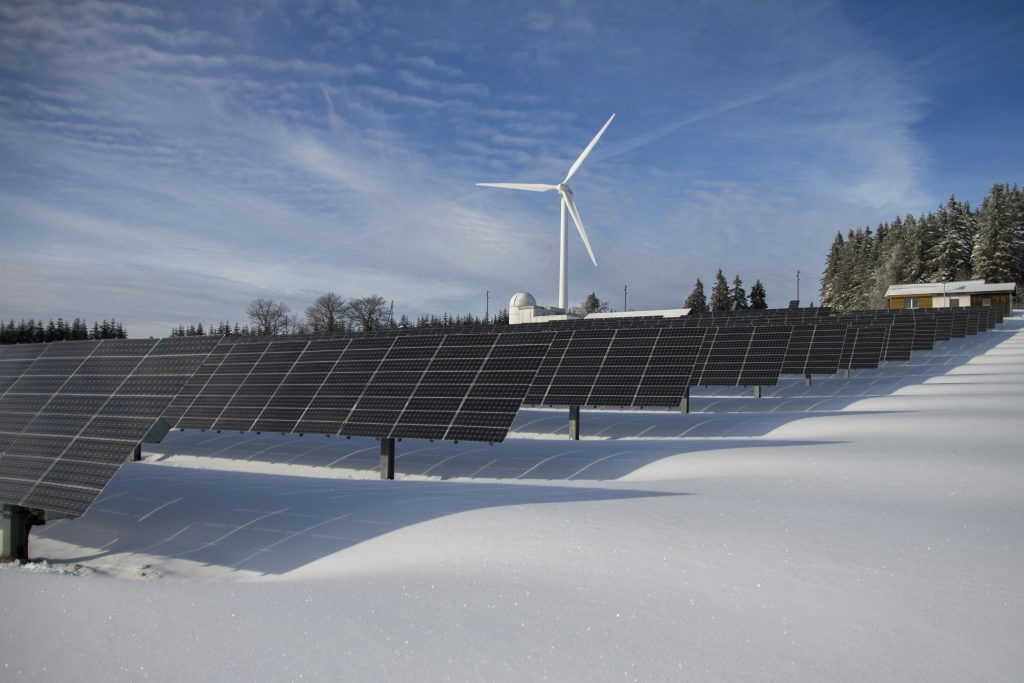Why New Environmental Technologies Need to Be Verified Before Implementation

By: Mark Heilig
Introduction
As the world grapples with the growing impacts of environmental degradation, there is an urgent need for innovative solutions that can mitigate these effects. Ecological technologies, ranging from renewable energy systems to advanced waste management techniques, offer the potential to significantly reduce human impact on the planet and advance the net-zero economy. However, the development and deployment of these technologies must be approached with caution. Rushing to implement unverified technologies can lead to unintended consequences, including environmental harm, economic losses, and damage to public trust in science and policy.
The Risks of Unverified Technologies
New environmental technologies often emerge in response to acute problems, such as the need to reduce greenhouse gas emissions or manage waste more effectively. The urgency of these issues can create pressure to implement solutions quickly, sometimes bypassing the necessary steps of thorough testing and verification. However, the history of technological development is replete with examples where the lack of verification led to unforeseen adverse outcomes.
One of the most significant risks of implementing unverified technologies is the potential for environmental harm. For example, geoengineering techniques, such as solar radiation management, have been proposed to combat climate change by reflecting sunlight away from the Earth. While these technologies may offer short-term climate benefits, their long-term environmental impacts remain unknown. Unverified geoengineering could disrupt ecosystems, alter weather patterns, or cause unintended ecological consequences.
Moreover, the economic risks associated with unverified technologies cannot be overlooked. Implementing a new technology often requires substantial financial investment, both in development and deployment. These financial and economic risks may ultimately stifle the innovation of cleantech if an independent verification of the technology’s performance is not conducted. If a technology fails to perform as expected or causes unforeseen harm, these investments can result in significant economic losses. Furthermore, the costs of remediation, should a technology cause environmental damage, can be astronomical, further burdening economies and diverting resources from other critical areas.
Ensuring Efficacy and Safety
Verifying environmental technologies is crucial to ensuring that they work as intended and that their benefits outweigh potential risks. This process involves rigorous testing to assess the technology’s performance in real-world conditions, including laboratory experiments, field trials, and pilot projects. One internationally recognized scheme for independently verifying the performance of cleantech solutions is the international standard ISO 14034:2016. Additionally, an independent, third-party verification process should comprehensively evaluate the technology’s potential environmental, social, and economic impacts.
For example, renewable energy technologies, such as wind turbines and solar panels, have undergone extensive verification to ensure their efficacy in reducing greenhouse gas emissions and their safety in various environments. This verification process has been essential in identifying and mitigating potential issues, such as the impact of wind turbines on bird populations or the environmental footprint of solar panel manufacturing.
In contrast, technologies that bypass thorough verification can lead to suboptimal or even harmful outcomes. For instance, introducing certain biofuels was initially hailed as a sustainable alternative to fossil fuels. However, insufficient verification of their environmental impact led to the realization that some biofuels contribute to food insecurity and increased greenhouse gas emissions, negating their intended benefits.
The Role of Regulation and Policy
Regulatory frameworks play a crucial role in verifying and implementing new environmental technologies. Governments and international bodies must establish and enforce standards for testing and evaluating these technologies before they are approved for widespread use. This regulatory oversight helps ensure that technologies are safe, effective, and aligned with broader environmental and societal goals. One example is Canada’s passing of Bill C-59 in June 2024, Canada’s first anti-greenwashing legislation that strengthened regulations and protected Canadians from greenwashing.
In the context of environmental technologies, this type of regulatory oversight prevents the premature adoption of unverified solutions. Policymakers must balance the need for innovation with the responsibility to protect public and environmental health. This balance can be achieved through a precautionary approach, where technologies are thoroughly vetted before they are allowed to scale, and through adaptive regulations that can respond to new information as it becomes available.
Maintaining Public Trust
Public trust is a critical component of successfully implementing new environmental technologies. If the public perceives that technologies are being deployed without sufficient verification, it can lead to resistance, skepticism, and even outright rejection of potentially beneficial innovations. A 2023 study in the United Kingdom revealed that less than one-quarter of the British public trust ESG claims being made. Maintaining public trust requires transparency, rigorous testing, and open communication about the risks and benefits of new technologies.
The deployment of innovative grid technologies, which aim to improve the efficiency and reliability of electricity distribution, illustrates the importance of public trust. In some cases, introducing these technologies faced public opposition due to concerns about privacy, health risks from electromagnetic fields, and the potential for increased costs. However, efforts to engage with the public, provide transparent information, and demonstrate intelligent grid technologies’ safety and efficacy helped alleviate concerns and build support for their adoption.
In contrast, the controversy surrounding hydraulic fracturing (fracking) for natural gas extraction highlights the consequences of failing to secure public trust. The rapid expansion of fracking in the United States led to widespread public concern about environmental and health impacts, including water contamination and seismic activity. The perceived lack of transparency and inadequate regulatory oversight contributed to public opposition and legal challenges, ultimately hindering the industry’s growth and damaging its reputation.
The Necessity of a Holistic Approach
Verifying new environmental technologies is not just about ensuring their technical efficacy; it also involves understanding the broader implications of their adoption. This requires a holistic approach that considers technological implementation’s social, economic, and ecological dimensions. Stakeholder engagement, including input from scientists, policymakers, industry representatives, and the public, is essential to identify potential risks and benefits from multiple perspectives.
For instance, introducing electric vehicles (EVs) has been accompanied by extensive research into their environmental and social impacts. While EVs offer significant benefits in reducing greenhouse gas emissions, their widespread adoption also raises concerns about sourcing raw materials for batteries, the energy mix used for electricity generation, and the implications for existing transportation infrastructure. A holistic approach to verification ensures that these issues are addressed, leading to more sustainable and socially acceptable outcomes.
Conclusion
The rapid development of environmental technologies is a critical component of the global response to environmental challenges. However, the rush to implement these technologies without thorough verification can lead to unintended consequences, undermining their potential benefits and causing harm to the environment, economy, and public trust. Rigorous verification processes, supported by robust regulatory frameworks and transparent public engagement, are essential to ensure that new technologies are safe, effective, and aligned with broader societal goals. By taking a cautious and holistic approach to technological innovation, we can harness the potential of environmental technologies while minimizing risks and maximizing benefits for future generations.
____________________________________
 Mark Heilig Mark Heilig has been a key member of the Globe Group since 2013. As the Director of Operations, he leads all operations focused on Environmental Technology Verification (ETV) of innovative cleantech solutions by the international standard ISO 14034. Under his guidance, GLOBE Group has advanced its mission to support developing and commercializing groundbreaking environmental technologies in the global marketplace.
Mark Heilig Mark Heilig has been a key member of the Globe Group since 2013. As the Director of Operations, he leads all operations focused on Environmental Technology Verification (ETV) of innovative cleantech solutions by the international standard ISO 14034. Under his guidance, GLOBE Group has advanced its mission to support developing and commercializing groundbreaking environmental technologies in the global marketplace.



